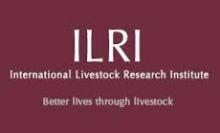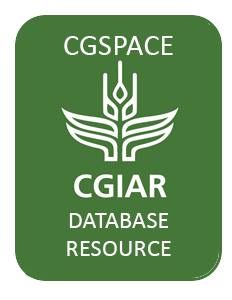Location
Vision, mission and strategy
ILRI's strategy 2013-2022 was approved in December 2012. It emerged from a wide processof consultation and engagement.
ILRI envisions... a world where all people have access to enough food and livelihood options to fulfil their potential.
ILRI’s mission is... to improve food and nutritional security and to reduce poverty in developing countries through research for efficient, safe and sustainable use of livestock—ensuring better lives through livestock.
ILRI’s three strategic objectives are:
- with partners, to develop, test, adapt and promote science-based practices that—being sustainable and scalable—achieve better lives through livestock.
- with partners,to provide compelling scientific evidence in ways that persuade decision-makers—from farms to boardrooms and parliaments—that smarter policies and bigger livestock investments can deliver significant socio-economic, health and environmental dividends to both poor nations and households.
- with partners,to increase capacity among ILRI’s key stakeholders to make better use of livestock science and investments for better lives through livestock.
This is ILRI’s second ten-year strategy. It incorporates a number of changes, many based on learning from the previous strategy (2000–2010, initially produced in 2000 and modified in 2002), an interim strategy (2011–2012) and an assessment of the external and internal environments in which the institute operates.
Members:
Resources
Displaying 6 - 10 of 1152Soil carbon dioxide and methane fluxes from forests and other land use types in an African tropical montane region
In the last 40 years, large areas of the Mau forest, the largest contiguous tropical montane forest in East Africa, have been cleared for agriculture. To date, there are no empirical data on how this land use change affects carbon dioxide (CO2) fluxes from soil respiration and soil methane (CH4) fluxes. This study reports measured annual soil CO2 and CH4 fluxes from the native Mau forest and previously forested lands converted to smallholder grazing land, smallholder and commercial tea plantations and eucalyptus plan- tations.
Milk handling practices and consumption behavior among Borana pastoralists in southern Ethiopia
Background
Safety and wholesomeness of milk intended for human consumption are influenced by various interlinked factors. However, information on what these factors are, especially in the pastoral traditional communities of Ethiopia, is largely lacking. The objective of this study is to assess the hygienic milk production, processing and consumption practices, and behaviors of Borana pastoralists.
Agro-morphological characterization of Urochloa grass accessions in Kenya
Land Use, Land Use History, and Soil Type Affect Soil Greenhouse Gas Fluxes From Agricultural Landscapes of the East African Highlands
This study aims to explain effects of soil textural class, topography, land use, and land use history on soil greenhouse gas (GHG) fluxes in the Lake Victoria region. We measured GHG fluxes from intact soil cores collected in Rakai, Uganda, an area characterized by low‐input smallholder (<2 ha) farming systems, typical for the East African highlands. The soil cores were air dried and rewetted to water holding capacities (WHCs) of 30, 55, and 80%. Soil CO2, CH4, and N2O fluxes were measured for 48 h following rewetting.


